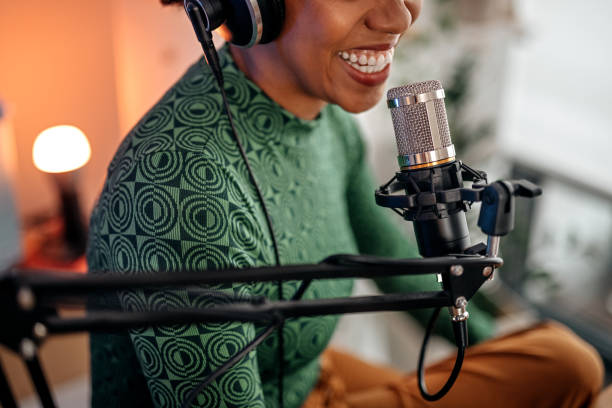Podcasting has evolved significantly in recent years, with advancements in technology enhancing equipment, software, and hosting services. However, the persistent challenge for podcasters remains the battle against background noise. Whether it’s the hustle and bustle of passing traffic or the subtle sounds within your home, achieving pristine audio quality without a professional recording studio can be a daunting task. In this guide, we’ll explore practical steps to not just reduce but eliminate non-constant background noise, ensuring your podcasts maintain the highest audio standards.
1. Opt for a Dynamic Mic in Non-Studio Environments
Selecting the right microphone is crucial for capturing clean and clear audio. In non-studio environments, dynamic microphones shine. Consider popular options like the Samson Q2U or the Shure MV7, both equipped with a heart-shaped pickup pattern. This design focuses on capturing sounds directly in front of the microphone, minimizing unwanted background noise. The Q2U, in particular, is a versatile choice, functioning as both a USB and XLR microphone, offering flexibility for various recording setups.
2. Implement Sound Treatment for Enhanced Audio Quality
Sound treatment is an essential component in the quest for noise-free recordings. While it primarily addresses issues like echo and reverb, incorporating sound-absorbing materials such as blankets can provide an additional layer of protection against background noise. While acoustic treatment may not completely eliminate background noise, it significantly contributes to overall improvement, ensuring your podcast sounds polished and professional.
3. Embrace Proximity to Your Mic for Clearer Audio
Enhance your voice’s clarity by getting up close and personal with your microphone. This not only ensures a direct and clear capture of your voice but also helps drown out surrounding sounds. By recording at a higher volume, you create a substantial gap between your voice and potential background disturbances, resulting in cleaner audio.
4. Create a Compact Recording Space for Studio-Quality Sound
You don’t need a dedicated studio room to achieve studio-quality sound. Focus on building a localized recording space around you and your microphone. Everyday items like duvets, drapes, or towels can serve as effective sound-isolating materials, contributing to a controlled recording environment. Remember, the goal is practicality and comfort in creating an environment conducive to high-quality recordings.
5. Enhance Protection with a Wardrobe for Superior Sound Dampening
For an additional layer of sound dampening, consider recording inside your wardrobe. Surrounded by hanging clothes, your recordings experience a significant reduction in background noise, creating a silent backdrop for your voice. This low-cost solution can make a substantial difference in achieving professional-grade audio quality.
6. Seal Windows and Doors for External Noise Control
If double glazing isn’t an option, mitigate external noise by fitting rubber or foam seals to windows and doors. This simple yet effective measure helps control the airflow into your space, keeping unwanted sounds at bay. Additionally, it may even contribute to energy efficiency, providing a dual benefit.
By combining these strategies with an affordable dynamic microphone and sound treatment, you can effectively combat background noise and elevate the overall quality of your podcast recordings. Implementing these tips ensures that your audience receives a seamless and immersive listening experience, free from distracting disturbances. Invest in your podcast’s audio quality, and let your content shine.
Need help launching your podcast?
Schedule a Free Podcast Strategy Call TODAY!


Recent Comments